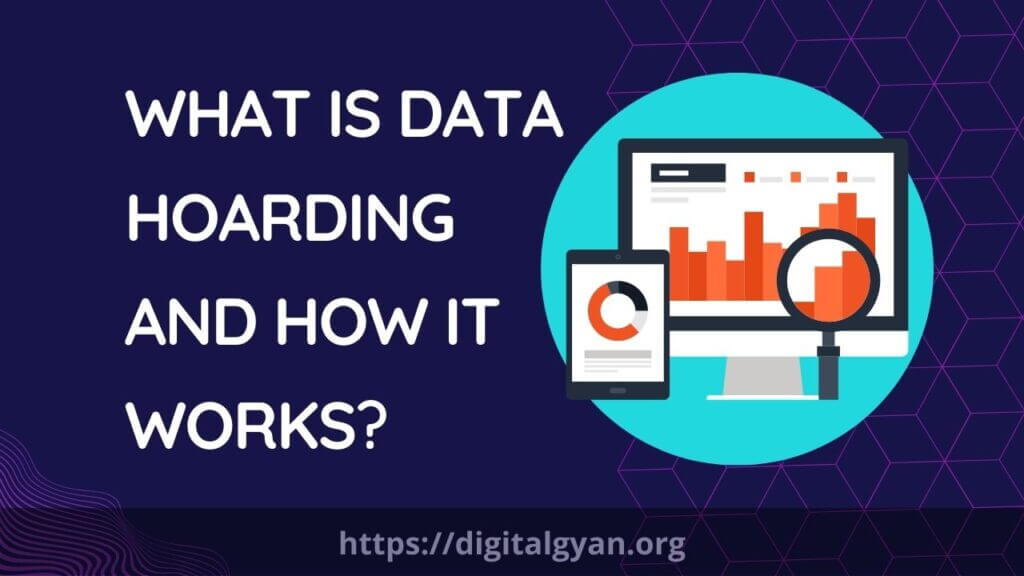What is Data Hoarding, and How Does it Work?
There is a growing trend known as data hoarding, where people accumulate and store large quantities of data without any clear purpose or intention to use it.
Data hoarding can take many forms, from collecting every email ever received to storing backups of old hard drives that haven’t been accessed in years. It’s often driven by a fear of missing out on important information or the belief that someday this data may be valuable or useful.
But what are the risks associated with data hoarding, and how can we prevent ourselves from becoming data hoarders?
What is Data Hoarding?
Data hoarding is the practice of accumulating and storing large amounts of data without any real purpose or intention. Unlike data archiving, which involves the systematic storage and retrieval of data for future reference, data hoarding is characterised by a lack of organisation and a lack of clear goals or objectives.
Data hoarding can occur on an individual level, where people accumulate data on their personal devices or in their cloud storage accounts. However, it can also occur on an organisational level, where businesses and institutions accumulate data without any clear plan for how it will be used.
A data hoarder collects and stores various files, documents, and images without a clear purpose or without permission. Data hoarding can be a very healthy part of life. But it can also quickly become problematic. In the past, it was easier for data hoarders to hide the evidence of their compulsive hoarding by hiding it all away in hard-to-reach places. It can also be difficult to stop, and it can be damaging to both the hoarder and those around them.
There are a few different ways to help data hoarders in their journey to end their problems. But the first step is identifying and removing the cause of the hoarding. Once the hoarding is under control, finding the appropriate treatment can be easy.

How is Data Hoarding different from Prefetching?
Data hoarding and prefetching are two common techniques used in the field of computer science to optimise system performance. While both methods involve caching data for quick retrieval, they differ in their purpose and approach.
Data hoarding refers to the practice of accumulating large amounts of data on a system without any immediate need for it. This can lead to wasted storage space, slower system performance, and increased vulnerability to security threats. Data hoarding is often driven by a fear of losing important information or a desire to keep all data within easy reach.
Prefetching, on the other hand, involves anticipating which data will be needed next and preloading it into cache memory before it is requested by the user. This technique can significantly reduce access times and improve overall system responsiveness.
Why is data hoarding popular?
In the olden days of the computer, people would only store their data on external hard drives. They would then only give those hard drives to family members and close friends. Over time, the computers were upgraded, and people began to keep all their data on their own computers.
Then there came cloud storage. Cloud storage was an upgrade from external hard drives, as it kept all of the data saved in one place. It was convenient, but at the same time, it was very easy to lose your cloud storage. If you were to lose your computer or your hard drive, you would lose your entire content.
Then the world of data hoarding came around. If people had so much data, that it was taking up too much space, then they would split it into multiple different places. There was no longer just a hard drive or a cloud that people were using; there were multiple hard drives that were used. That way, they would only need to worry about losing one place.
In the late 2000s, the practice of data hoarding became more mainstream. Companies and people began to find that they were just taking up too much space, and they would have to figure out a better way. That is how the blockchain came into the picture.
When the blockchain was invented, it came with a completely new protocol of how we could use it. Instead of having a centralised server, which is how people used the internet back in the olden days, the blockchain protocol created a decentralised system. This way, there is no single point of failure, and all users are in control of their data.
Conclusion
Data hoarding is the practice of collecting and storing massive amounts of digital information, often well beyond what’s truly necessary or used. It’s like having a room overflowing with boxes filled with things you might need someday, but never actually do.

